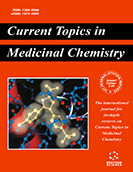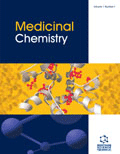Title:Analysis of the Differential Expression Patterns of Sumoylation Enzymes E1, E2 and E3 in Ocular Cell Lines
Volume: 18
Issue: 8
关键词:
SAE1
摘要: Purpose: Protein sumoylation is a well established regulatory mechanism to control
many cellular processes such as chromatin structure dynamics, transcriptional regulation of gene
expression, cell proliferation and differentiation, cell transformation and carcinogenesis, autophagy
and senescence. In the vertebrate vision system, we and others have revealed that sumoylation
plays important roles in regulating differentiation of several ocular tissues during eye development.
To further elucidate the functional mechanisms of sumoylation, in vitro assay systems are needed.
Currently, the five major cell lines including αTN4-1, FHL124, HLE, N/N1003A and ARPE-19 have
been extensively used to test the biochemical and molecular aspects of normal vision physiology
and various disease processes. Thus, we conducted the study on the expression patterns of the
three types of sumoylation enzymes, the activating enzymes SAE1 and UBA2, the conjugating
enzyme UBC9, and the ligating enzymes such as RanBP2 and PIAS1 in these ocular cell lines.
Methods: The 5 major ocular cell lines were cultured in Dulbecco’s modified Eagle’s medium
(DMEM) containing fetal bovine serum (FBS) or rabbit serum (RBS) and 1% Penicillin-
Streptomycin. The mRNA levels were analysed with qRT-PCR. The protein levels were determined
with western blot analysis and quantitated with Image J.
Results: we have obtained the following results: 1) For the mRNAs encoding E1 SAE1 and UBA2,
E2 UBC9 and E3 PIAS1, the highest level of expression was observed in αTN4-1 cells; For the
mRNA encoding RanBP2, the highest level of expression was detected in N/N1003A cells; 2) In
contrast to the mRNA expression patterns, a similar level of the SAE1 protein was observed in the
all five cell lines, and so is true with UBA2 protein in all cells except for N/N1003A where over fourfold
of enrichment in UBA2 protein was observed compared with other cell lines; 3) A similar level
of UBC9 protein was also detected in all cells except for N/N1003A where more than one-fold of
decrease in UBC9 level was found compared with other cell lines; 4) For E3 ligases, we did not
identify the regular PIAS1 band in N/N1003A cells, the remaining cells have a level of PIAS1 with
difference of less than 0.6-fold; all cells except for FHL124 cells have a similar level of RanBP2,
and a 70% drop in RanBP2 was observed in FHL124 cell.
Conclusions: Our determination of the differential expression patterns of the three types of
sumoylation enzymes in the 5 ocular cell lines help to understand sumoylation functions in
vertebrate eye.

















.jpeg)













